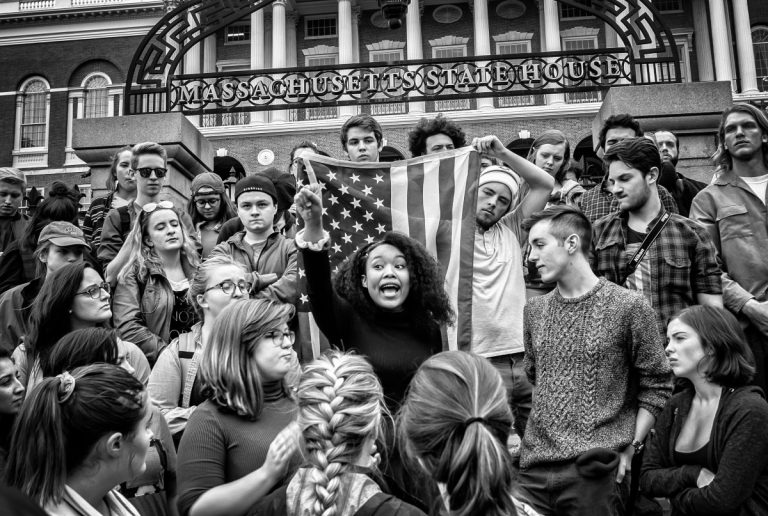
Throughout history, student protests have become a staple for social change the world over. In recent months they have come to the fore again as volatile protests raged at UC Berkeley over right-wing speakers appearing on campus and freedom of speech.
There has also been a litany of marches in response to the election of US President Donald Trump. And in more recent weeks, universities from South Africa to Pakistan have been raising their voice in protest to the ongoing persecution of Rohingya Muslims in Burma.
Those students protesting today are supported by a long and illustrious history of student activists who took measures to shape the world of politics by taking action. Let’s cast our eyes back and remember some of the most significant student uprisings that changed the face of history.
1. Vietnam War Protests – 1966-1969
The anti-war movement of the 1960s mostly began on college campuses, as student members of an organisation called Students for a Democratic Society began organising teach-ins to talk about their opposition to the Vietnam War.
As the war progressed and more and more young men were drafted in, the voice of protest became more vocal with marches springing up on university campuses across the US. One of the most famous was at Kent State University in 1970. Four students were killed during a protest when Ohio National Guardsmen fired into the crowd. The shootings instigated a nationwide strike that forced many colleges and universities to close.
The anti-war sentiment spread across the pond where over 4,000 people protested outside the US Embassy in Grosvenor Square.
President Nixon eventually cited the protests as part of the reason why American troops withdrew in 1973.
2. Anti-Apartheid – 1976
The institutionalised racial segregation system implemented in South Africa from 1948 – 1991, known as apartheid, enforced discrimination, political disenfranchisement, and political violence against black South Africans.
The beginning of the end of apartheid was marked by the Soweto Uprising—a series of protests led by black students in the Soweto township of South Africa. An estimated 20,000 students participated in the protests in response to the Afrikaans language requirements for black students, a language associated with white oppressors.
The protestors were met with severe police brutality when they were fired upon with tear gas and bullets, killing an estimated 176 protestors. The tragedy sparked anti-apartheid movements across the globe. University students in the United Kingdom, United States, and other countries joined the movement and held demonstrations of their own, urging their universities to divest from South African institutions that supported apartheid.
3. Tiananmen Square Protest – 1989
Perhaps the most famous student protest, Tiananmen Square became infamous for the government’s heavy-handed and deadly response, as well the iconic imagery of “tank man.”
In 1989, student protesters occupied the square in react to the death of former Communist Party Secretary General Hu Yaobang, who had been a reformist. His death was the spark that subsequently led to pro-democracy protests.
To put an end to the protests, the People’s Liberation Army moved into the square in tanks and firing tear gas. One man, identified by the Sunday Express at 19-year-old student Wang Wei Lin, became an icon after standing in front of a line of advancing tanks. His identity has never been confirmed, however, and his whereabouts remain unknown.
Liked this? Then you’ll love these…
Students in Pakistan, India protest atrocities against Rohingyas
Hong Kong: Student protest leader Joshua Wong ‘mentally prepared’ for jail







